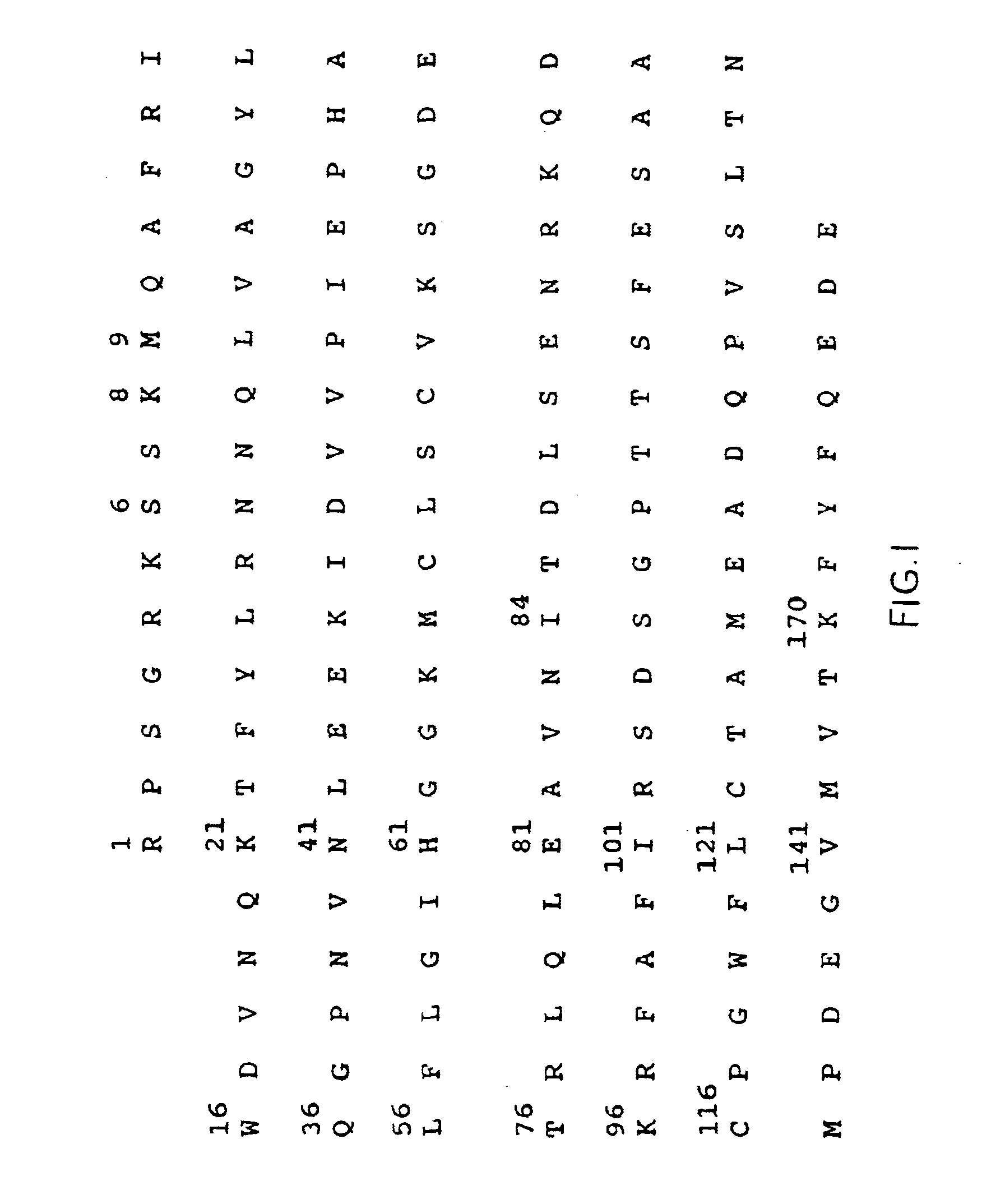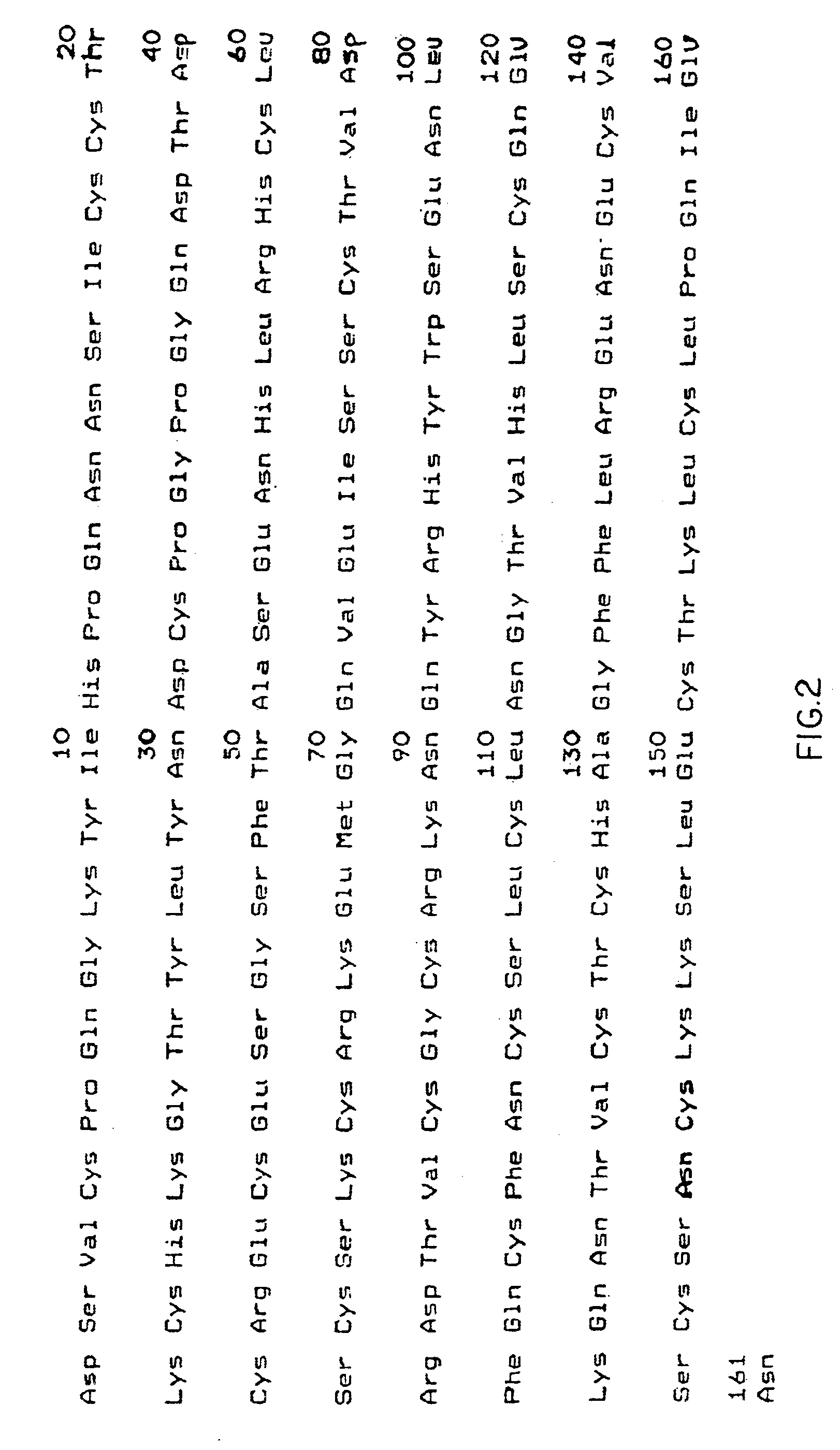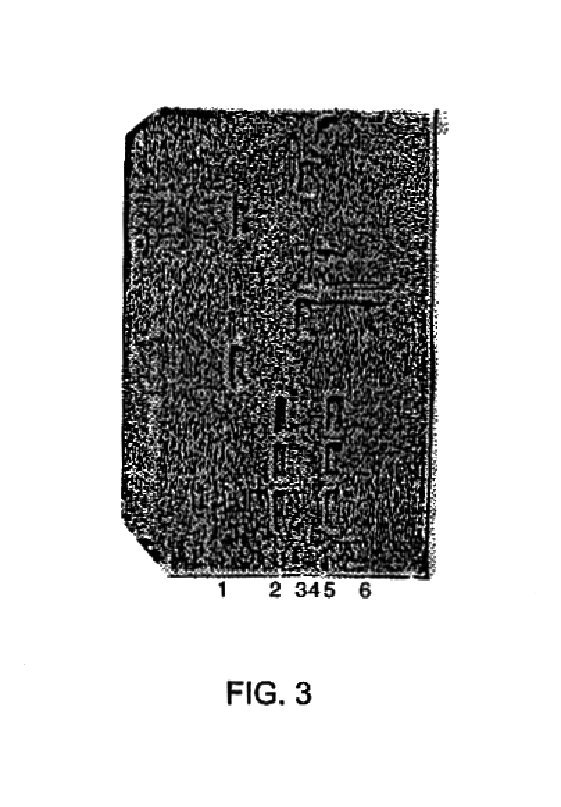Nucleic acids encoding interleukin-1 inhibitors and processes for preparing interleukin-1 inhibitors
a technology of interleukin-1 inhibitor and nucleic acid encoding protein, which is applied in the field of polypeptides, can solve the problems of rapid removal of protein from the body, affecting the development of anti-human immunoglobulins, etc., and achieves the effect of facilitating the refolding of bacterially expressed polypeptides
- Summary
- Abstract
- Description
- Claims
- Application Information
AI Technical Summary
Benefits of technology
Problems solved by technology
Method used
Image
Examples
example i
APPENDIX TO EXAMPLE I
Synthesis of Reagent 1
Structures of starting material, intermediates and reagent from synthesis 1.
Starting material:
Generalized formula for monomethoxypolyethylene glycol (mPEGx):
CH3O—(CH2CH2O)n—H
where x denotes the average molecular weight of the polymer in kilodaltons and n is the average number of
repeating oxythylene groups.
Synthesis of Reagent 2
Structures of Starting Material, Intermediates and Reagent from Synthesis 2
Starting material:
Generalized formula for monomethoxypolyethylene glycol (mPEGx):
CH3O—(CH2CH2O)n—H
where x denotes the average molecular weight of the polymer in kilodaltons and n is the average number of repeating oxyethylene groups.
Synthesis of Reagent 3
Structures of Starting Material, Intermediates and Reagent from Synthesis 3
Starting material:
Intermediate 5 (mPEGx—NH2):
CH3O—(CH2CH2O)n−1—(CH2CH2)—NH2
example ii
Preparation of Pegylated Native IL-1ra
Various parameters were tested in optimizing the pegylation reaction of native IL-1ra with successful pegylation assayed by visual inspection for a single tight band at 29 kilodaltons on Coomassie stained SDS-PAGE and a single sharp peak by analytical ion exchange chromatography. Unless otherwise stated, pegylation reactions were done at 1 mg / ml of native IL-1ra at room temperature in HEPES buffer pH 7.2 with a mPEG reagent to IL-1ra ratio of 2:1. The reagent used in these studies was mPEG-amido-maleimide (Reagent 2) and the product is referred to as mPEGx*IL-1ra but the results are applicable to all three reagents.
A. Time
Pegylation reactions at room temperature were analyzed from 0.5 to 24 hours. Conversion of the IL-1ra to the pegylated form is complete (80%-90%) in two to four hours and the total amount of mPEG*IL-1ra does not increase or decrease after longer periods of incubation. The quality of the mPEG*IL-1ra assayed by SDS-PAGE decreases...
example iii
Purification of Pegylated Native IL-1ra
Purification of mPEGx*IL-1ra can be achieved by cation exchange or size exclusion chromatography. These procedures are applicable to pegylated IL-1ra derived from all three reagents described above.
Cation Exchange Chromatography
The mPEGx*IL-1ra can be purified using a MonoS (Pharmacia) column with 20 mM MES buffer at pH 5.5. The proteins were eluted from the column using a salt gradient from 0 to 500 mM NaCl in the same buffer. For example, unmodified IL-1ra elutes at 220 mM NaCl, while the purity is assessed by various techniques including analytical ion exchange chromatography and SDS-PAGE. mPEG5000 IL-ra elutes at 160 mM (FIGS. 4A and 4B).
B. Size Exclusion Chromatography
The mPEG5000*IL-1ra, which runs as about 52 kd, and mPEG8500*IL-1ra, which runs as about 68 kd (based on column calibration with known size standards), can easily be separated from unmodified IL-1ra (17 kd) by size exclusion chromatography on a Superdex 75 (Pharmacia) column ...
PUM
| Property | Measurement | Unit |
|---|---|---|
| Fraction | aaaaa | aaaaa |
| Fraction | aaaaa | aaaaa |
| Fraction | aaaaa | aaaaa |
Abstract
Description
Claims
Application Information
 Login to View More
Login to View More - R&D
- Intellectual Property
- Life Sciences
- Materials
- Tech Scout
- Unparalleled Data Quality
- Higher Quality Content
- 60% Fewer Hallucinations
Browse by: Latest US Patents, China's latest patents, Technical Efficacy Thesaurus, Application Domain, Technology Topic, Popular Technical Reports.
© 2025 PatSnap. All rights reserved.Legal|Privacy policy|Modern Slavery Act Transparency Statement|Sitemap|About US| Contact US: help@patsnap.com



